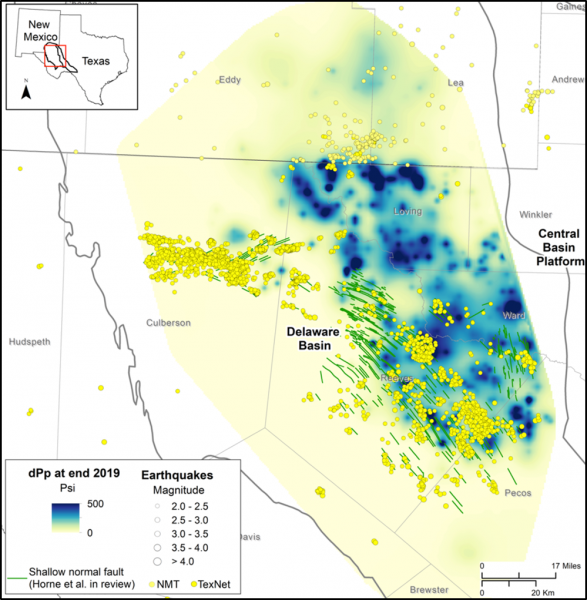Tracking Pressure in the Permian
December 5, 2022

A model created at the Bureau of Economic Geology is providing the most comprehensive look yet at subsurface pressure buildup associated with wastewater injection in the Delaware Mountain Group, the most commonly used geologic layer for disposing of water brought up by oil and gas production in the Permian Basin.
To date, more than 11 billion barrels of wastewater has been injected into the formation. With all that water comes changes in subsurface pressure, which in some cases has been linked to increased seismicity.
The model could help develop strategies to mitigate induced earthquakes and other issues related to injection, said Peter Hennings, the principal investigator at the bureau’s Center for Integrated Seismicity Research.
A study that used the model to investigate wastewater flow and associated pressure changes in the Delaware Mountain Group during the past 36 years was published in the Journal of Hydrology: Regional Studies in February 2022.
“We are modeling the impact from the very beginning of record-keeping throughout the area of interest,” said lead author Jun Ge, a bureau research scientist associate. “We include all of the details of water disposal activities in the area.”
According to the model, the increase in pore pressure in the formation can be significant, ranging from 100 to 400 pounds per square inch, with some areas potentially reaching up to 500 psi and higher near wastewater injection wells. The model confirmed earlier research linking some earthquakes in the southern region of the Delaware Basin to wastewater injection. However, the connection between these quakes and wastewater injection is more complicated in the northern region of the basin, where seismic activity is increasing.
As wastewater injection into the formation is only expected to increase during the years ahead and then continue for decades, Hennings said that the model can help untangle the effects of injection on seismicity, the integrity of thousands of old oil wells in the region and to the land surface itself.
“This work is so timely because it provides a basis for how we view the potential impact of injection and how these injection reservoirs can be managed as resources for disposal,” he said.
The study’s additional co-authors are the bureau’s Katie Smye, J.P. Nicot, Seyyed Hosseini, Caroline Breton and Rebecca Gao, who is also a doctoral student in the Department of Geological Sciences.
Back to the Newsletter